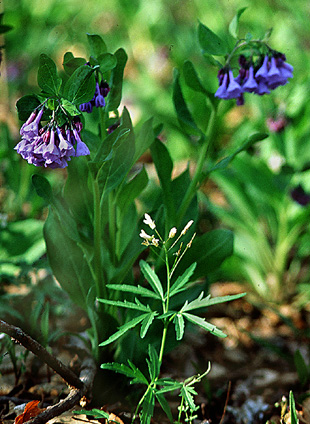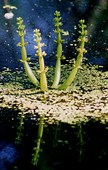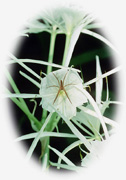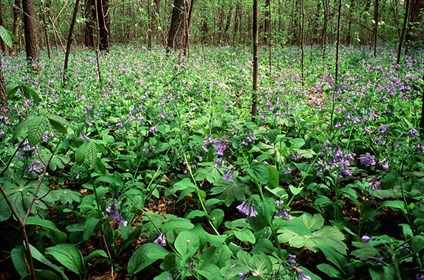
Twin Swamps Nature Preserve is just west of USI's campus and provides a wonderful opportunity for our students to explore the native species of plants an animals in this unique environment. Twin Swamps consists of two actual swamp ecosystems - a Cottonwood-Bald Cypress Swamp and an Overcup Oak Swamp, separated by an area of southern flatwoods. Twin Swamps is one of the few remaining ecological communities of this kind, though this type of swamp used to cover large portions of the Ohio and Wabash River Valleys.
Click below to explore a Guide to the Wildflowers of Twin Swamps.
 |
 |
|||
|
A Guide to the Wildflowers Twin Swamps |
||||
|
Guide to Flowers Trail Map Hike the Trail |
 |
Plant Lists |
|
|
This Web site was created to help you identify the many wildflowers that grow at Twin Swamps Nature Preserve, which is in the southwest tip of Indiana, where the Wabash River flows into the Ohio. |
|
||
|
Twin Swamps was established in 1987 by Indiana's Department of Natural Resources to help save the state's dwindling population of bald cypress trees. The 500-acre site is home to a wide variety of plants, including the large spread of Virginia bluebells shown here. |
|
||
|
|
|
A Guide to the Flowers Thumbnail photos of more than a hundred types of wildflowers at Twin Swamps will be found on the Web pages listed below. Please click on the thumbnails to see full-sized pictures and information on the flowers. To help you find specific flowers, the pictures are organized by season, by habitat and by color.
|
||
|
By season Early Spring (March-April)
|
By habitat Field
|
By color White flowers |
|
For more information on finding flowers, please see This Is How I've Arranged the Photos |
||
|
Stuff I Should Tell You |
||
|
On the Net: A Way |
||
More swamp things
|
Photography and text |
If you have questions or comments, please write to Rick Mark at:
This Web site would not have been possible without the support
of the Biology and Liberal Studies departments at the University of Southern Indiana,
the Indiana Department of Natural Resources' Division of Nature Preserves,
and the Indiana Academy of Science.
Copyright 1999 by Rick Mark
All photographs on this Web site are the property of Rick Mark
and may not be copied or used without his permission.